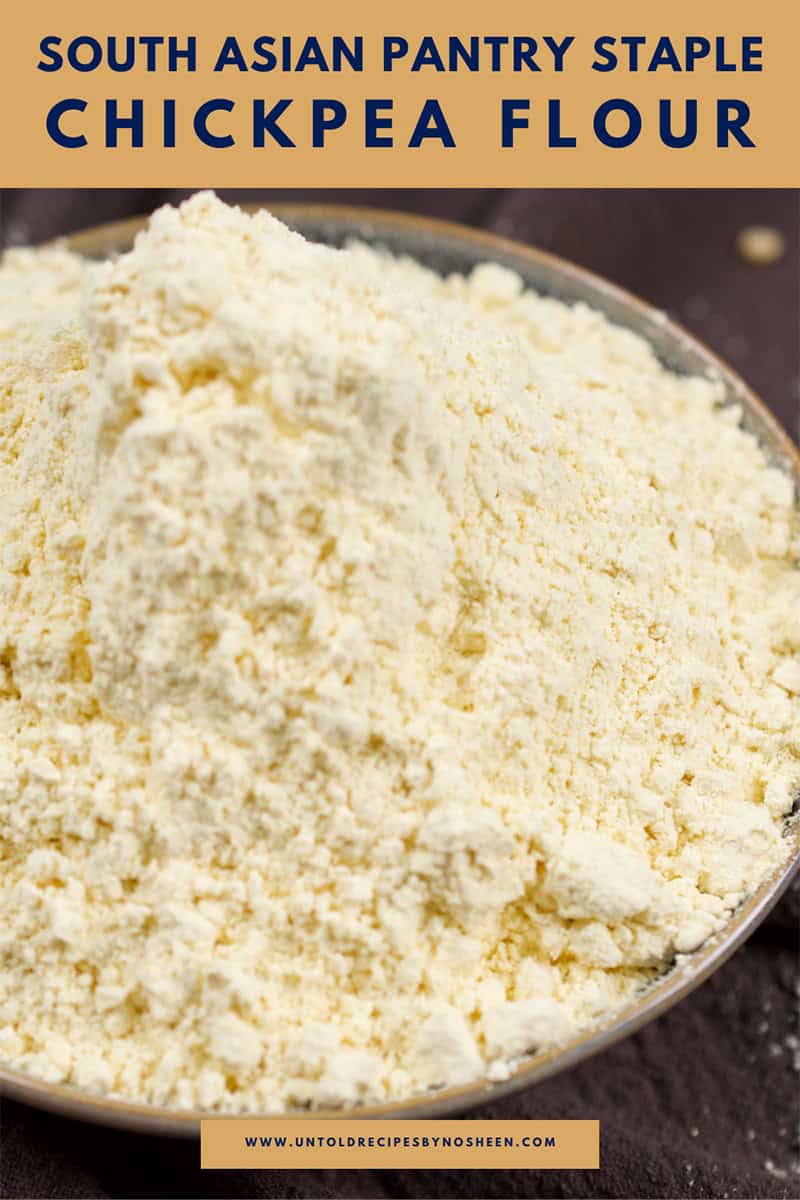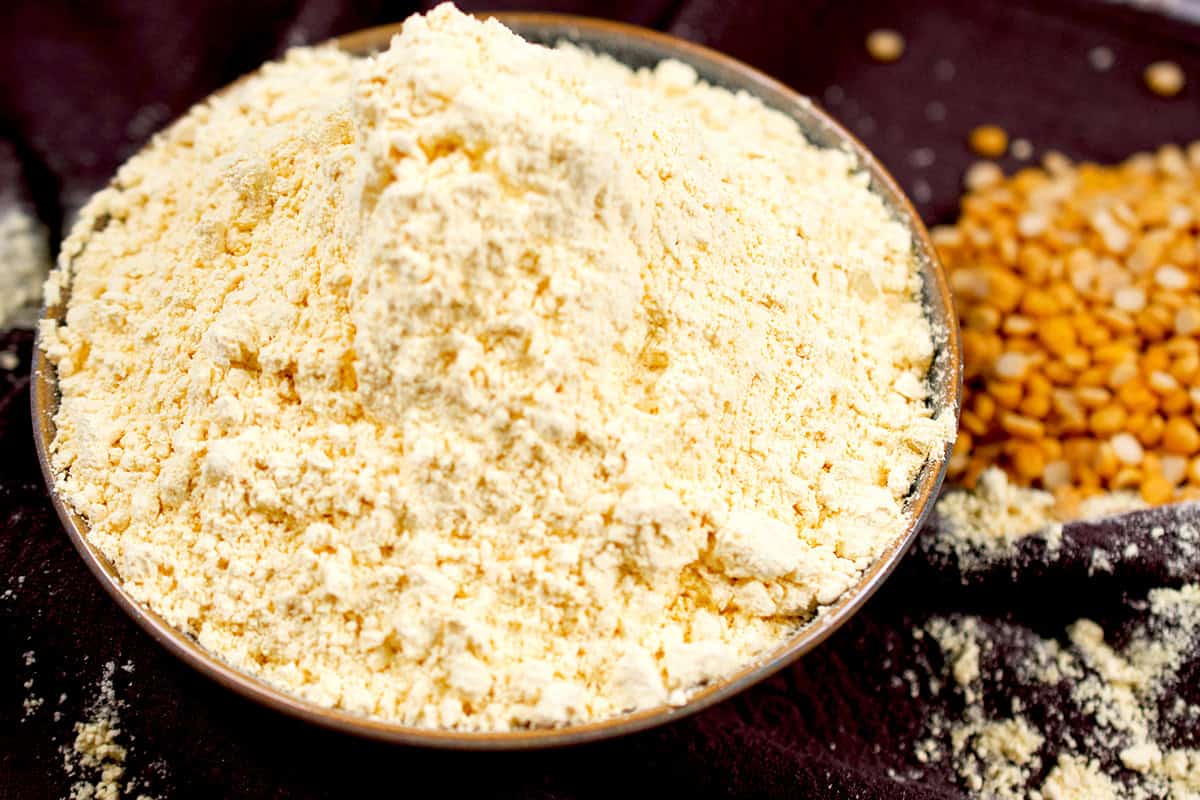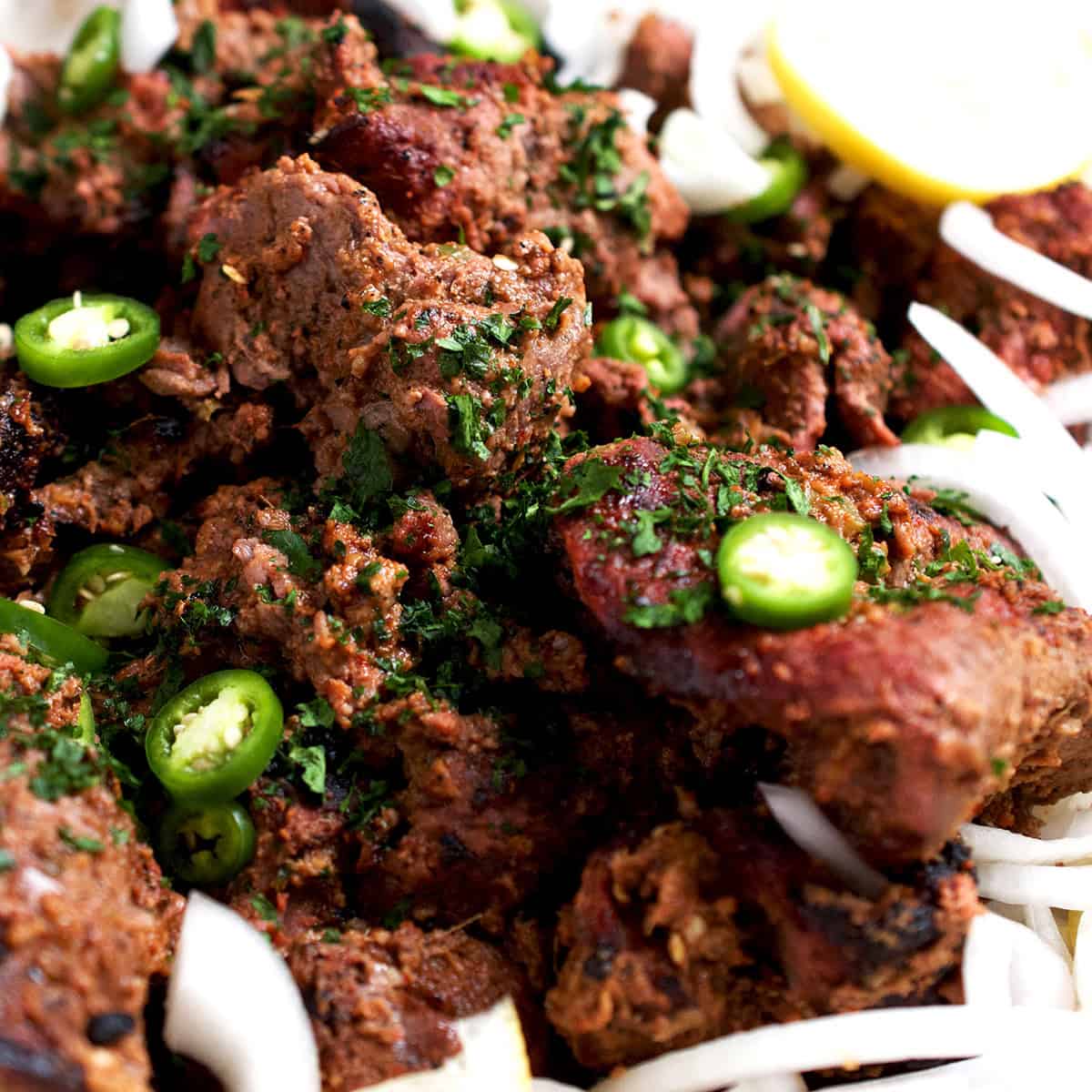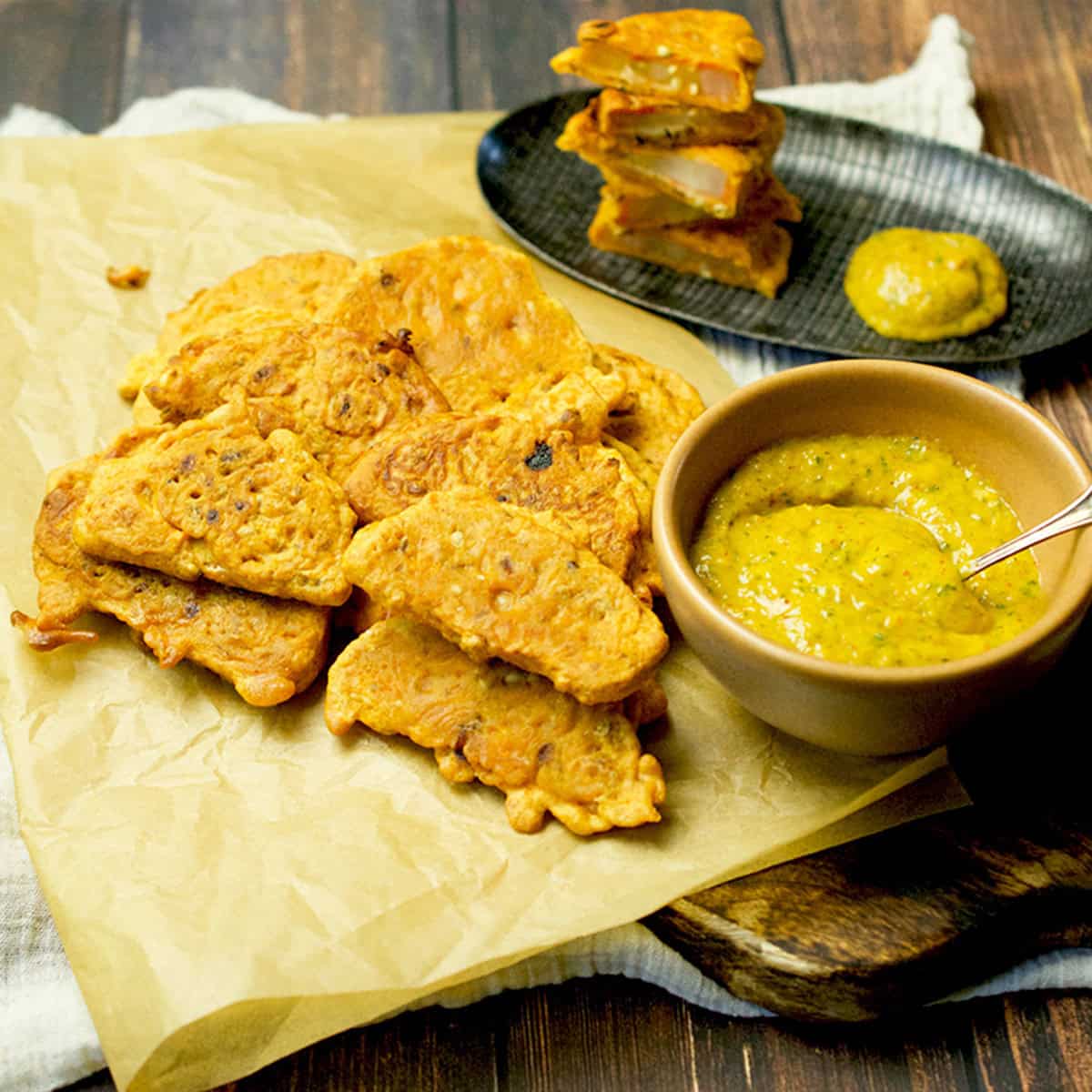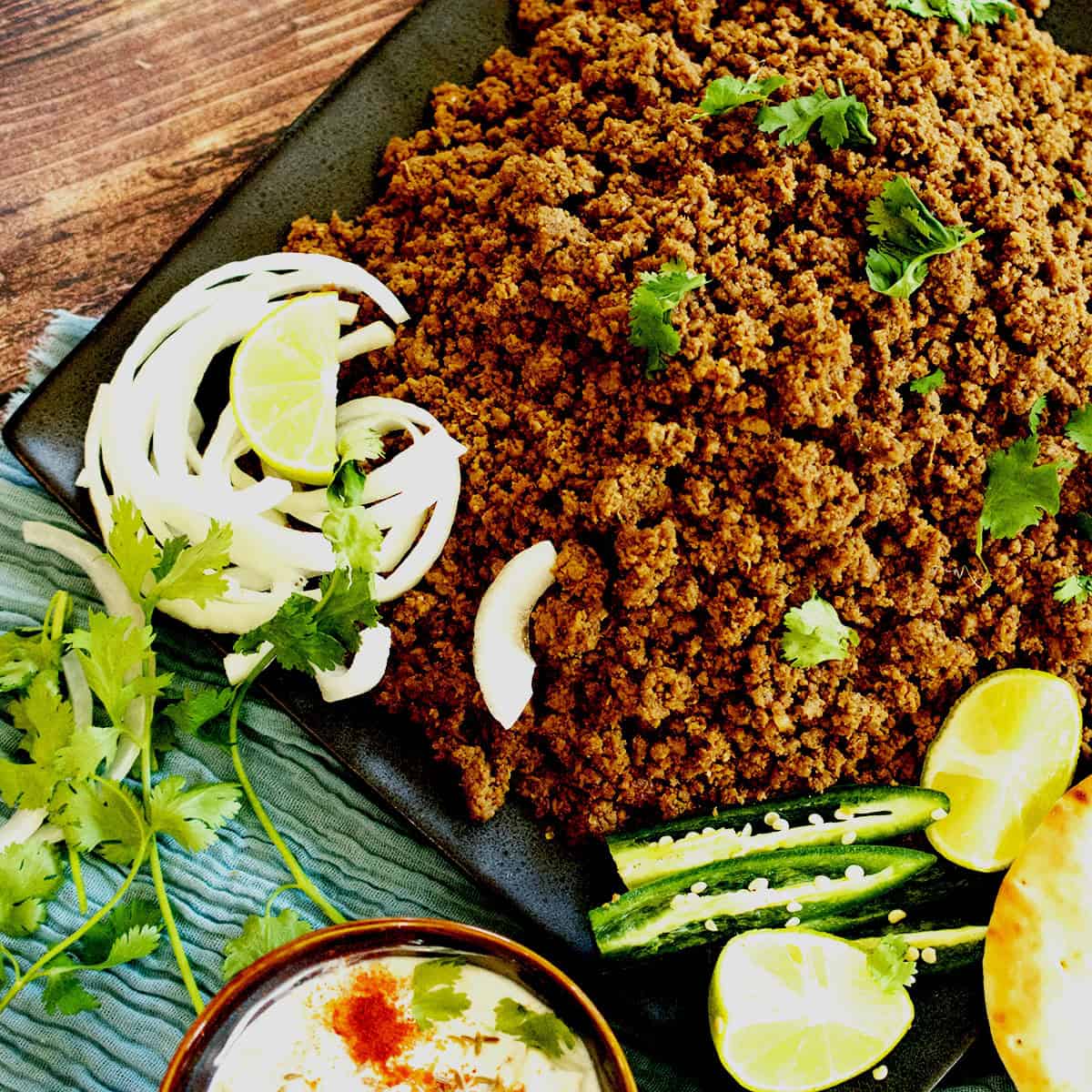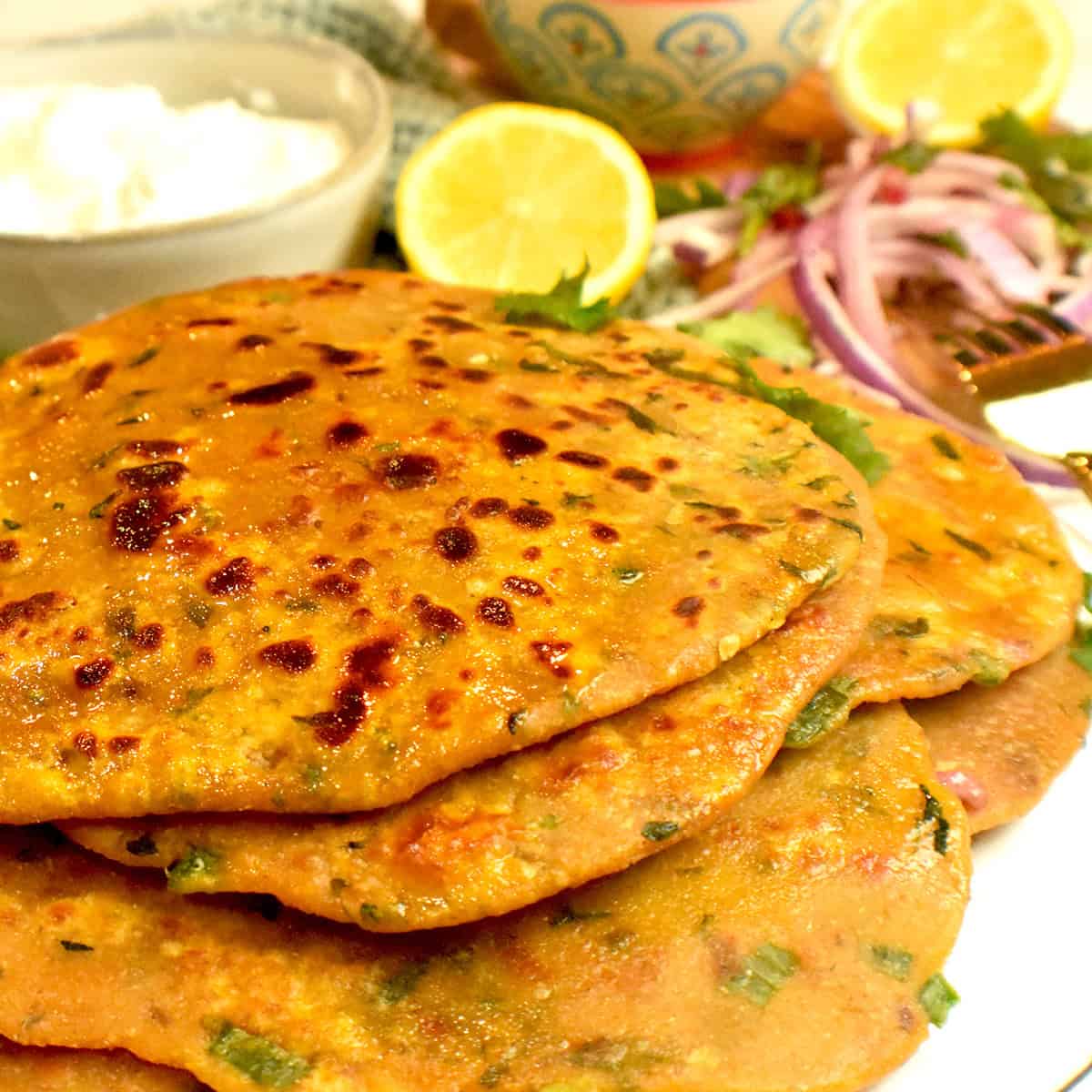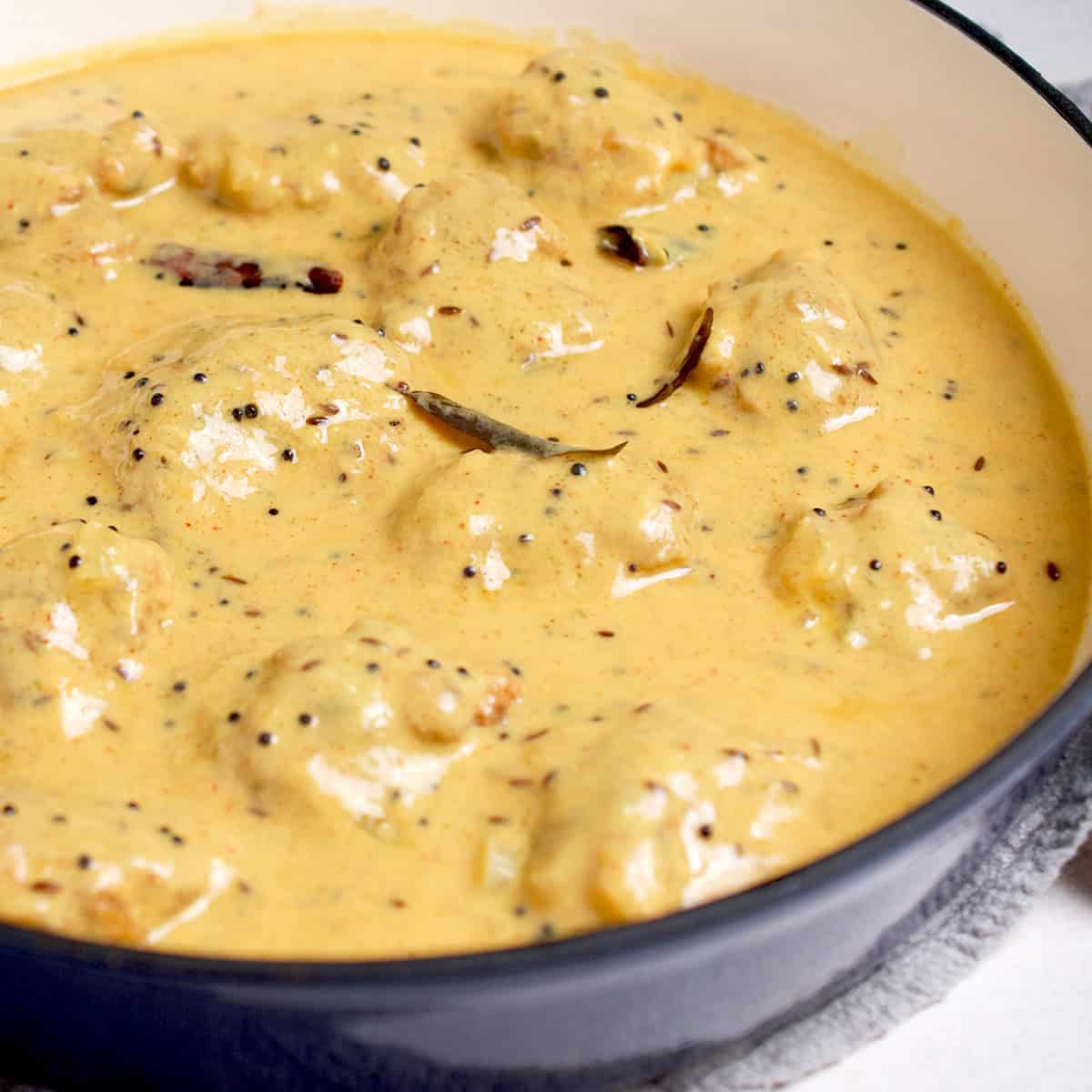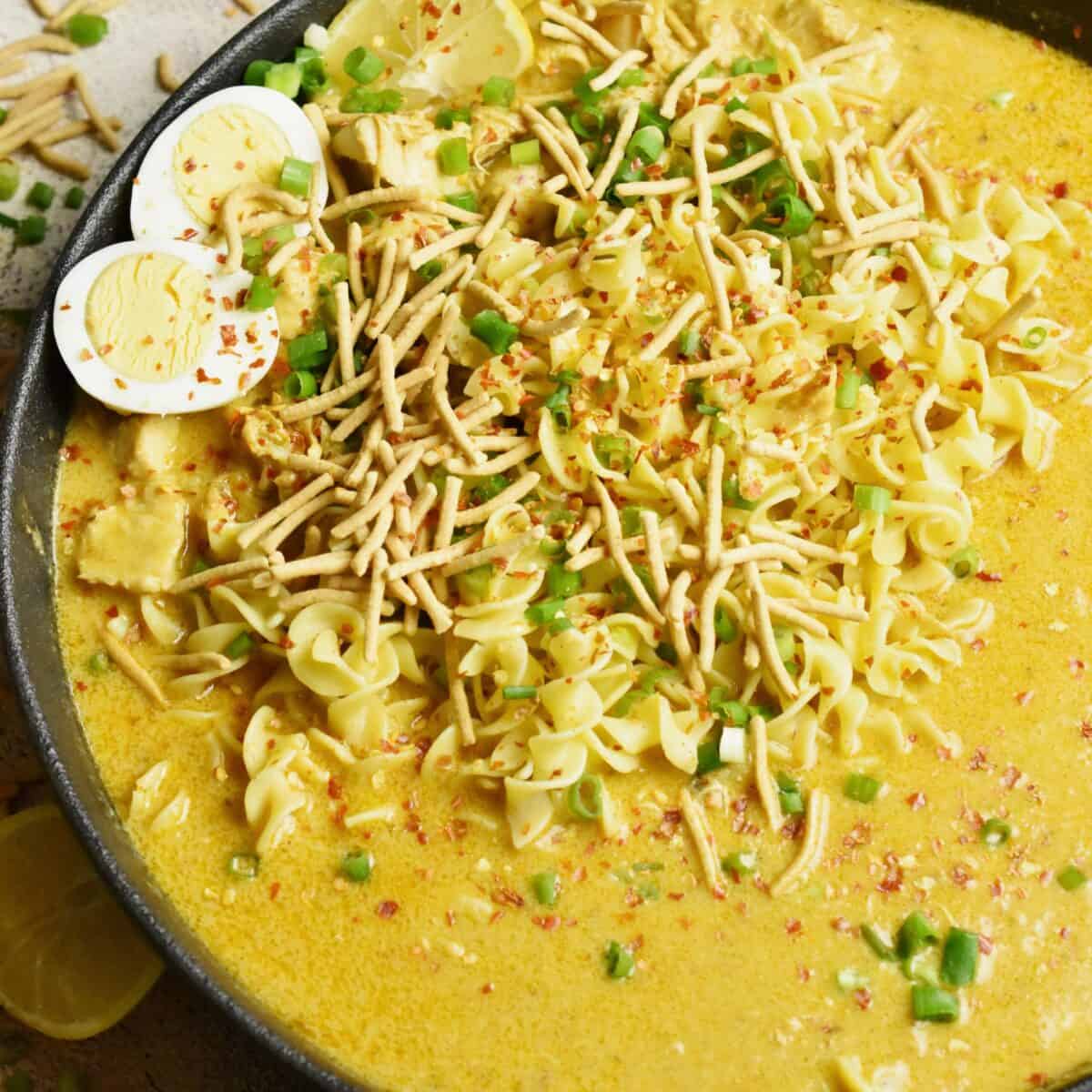As the name indicates, chickpea flour is a gluten-free flour made from dried garbanzo beans. It is high in protein and fiber and has a mild nutty flavor. This flour also has a long shelf life. Besan or gram flour, the South Asian variety, is made from a lentil called split Bengal gram. In their whole form, the lentils are known as kala chana and look like dark brown, almost blackish chickpeas.
Besan vs. chickpea flour
You’re probably wondering how these two flours are different and how your recipes will turn out if you swap one for the other. A few key differences are:
The color - Besan is yellow, while chickpea flour is white. The texture - Besan is finely ground and resembles actual flour, whereas garbanzo bean flour is coarse and grainy. The taste - Both have a nutty flavor, but besan is slightly sweeter and milder, while chickpea flour has a slightly bitter aftertaste.
While the differences are minor, using the two interchangeably may require some recipe modifications. Chickpea flour typically requires more water to achieve the proper consistency in a recipe.
How South Asians use besan
As mentioned earlier, besan is a versatile ingredient. Some of the prominent ways it’s used in South Asian cooking are as follows:
Thickening agent - A tablespoon or two of besan is often used to thicken curries and chutneys. Binding agent—Gram flour is an excellent binding agent. It can be added to marinades to help them adhere to meats or used in recipes like koftas and kebabs to help bind the meat with all the other ingredients. Crisping agent—A popular way to use it is in baking, especially shortbread-style cookies, which crisp up well when this flour is added. Fried snacks—Pakistanis and Indians most commonly use this ingredient to make fritters like chicken pakoras. Flatbreads - Using this flour to make rotis, naans, parathas, and other flatbreads is also a delicious way to add to your culinary repertoire.
Recipes with chickpea flour
